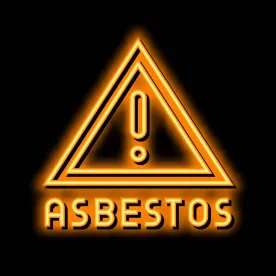Key Takeaways
- What is happening? The U.S. Environmental Protection Agency (EPA) has finalized a rule requiring asbestos manufacturers, importers, and processors to report certain asbestos exposure-related information. The rule applies to companies that manufactured, imported, or processed asbestos during 2019-2022 and which have annual sales over $500,000 in any of those calendar years. The rule imposes a one-time reporting requirement on these companies to provide information from the past four calendar years on the presence, types, and quantities of asbestos they have handled, as well as types of use and employee data. The rule encompasses reporting on asbestos in bulk form, in an article or product, as an impurity, or as a component of a mixture. Affected companies must submit the required information to EPA within nine months from the rule’s effective date (i.e., by May 24, 2024).
- What is the background? The rule was promulgated under section 8(a) of the Toxic Substances Control Act (TSCA), which generally authorizes EPA to require companies to maintain records and submit reports. The rule arose from a settlement between EPA and the Asbestos Disease Awareness Organization and certain states, which sued the agency in 2018 and 2019, respectively, to compel EPA to require certain reporting for asbestos. The new rule is separate from EPA’s proposed risk management rule for chrysotile asbestos, which the agency plans to finalize in October 2023.
Asbestos Types and Companies Covered
The term “asbestos” as used in the rule covers the following types of fibrous asbestos: asbestos (CAS No. 1332-21-4), chrysotile (CAS No. 12001-29-5), crocidolite (CAS No. 12001-28-4), amosite (CAS No. 12172-73-5), anthophyllite (CAS No. 77536-67-5), tremolite (77536-68-6), actinolite (CAS No. 77536-66-4), and Libby amphibole asbestos (which does not have a CAS No. but mainly consists of tremolite (Cas No. 77536-68-6), winchite (CAS No. 12425-92-2), and richterite (CAS No. 17068-76-7)).
The rule imposes a one-time reporting obligation for companies who have manufactured, imported, or processed these asbestos types—including in bulk form, as an impurity, in a mixture, or in articles or products—between 2019 and 2022. The rule does not apply to companies with annual sales of $500,000 or below (combined with those of their parent company, if any) in any calendar year from 2019 to 2022.
Reporting Standard
EPA decided against a threshold concentration for reporting, reasoning that a threshold may eliminate useful reporting information given the presence of small quantities of asbestos in some products. Instead, the rule requires reporting on information “known to or reasonably ascertainable by” the submitter. This rule, which is already used for TSCA section 8(a) reporting obligations, requires companies to report based on “all information in a person’s possession or control, plus all information that a reasonable person similarly situated might be expected to possess, control, or know.” In the rule’s preamble, EPA acknowledges that the information-gathering activities that may be necessary under this standard may vary from case to case. However, the rule requires a reasonable inquiry within the full scope of the submitter’s organization and may also entail inquiries outside the organization to fill knowledge gaps. Submitters who are aware of asbestos in their product but who are unable to determine or estimate the quantity manufactured, imported, or processed will be directed to fill out a short form for attestation purposes (Form A), in lieu of full reporting (Form B).
Reportable Information and Reporting Deadline
Reporting requires submittal of information on quantities manufactured, imported, or processed for each asbestos type; the activity for each asbestos type (e.g., mining or milling for manufacturers, importation, primary and/or secondary processing); and employee exposure information associated with each activity. The required employee data includes the number of employees associated with each activity, whether personal protective equipment was used, and any workplace exposure measurement assessments.
Companies must electronically report to EPA during a three-month period, which will begin six months following the final rule’s effective date. This means the reporting window will open on February 24, 2024 and end on May 24, 2024. Companies will therefore have up to nine months following the effective date to collect and submit all required information using EPA’s Central Data Exchange, the agency’s e-reporting portal.
Recordkeeping
Each person who reports under the rule will be required to maintain records on the reported information for five years, beginning on the last date of the submission period. In accordance with TSCA, EPA officials must be permitted access to and the copying of such records upon request.
Reactions
The American Chemistry Council (ACC) is calling on EPA to reconsider the rule, stating that it will be unworkable without a de minimis threshold of 1% or higher. ACC does not agree with EPA’s reasoning that a threshold would not satisfy the agency’s data needs, since the ACC argues that companies are unlikely to have any information on the presence of asbestos impurities below 1%. On the other hand, the ADAO was disappointed that EPA did not adopt a number of its recommendations, including a 10-year lookback period instead of the four years EPA settled on, as well as reporting updates and submission of data on releases of asbestos to the environment.







 />i
/>i
